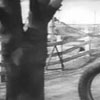I am on the cusp of really messing up our master bedroomWe have a "nook" that is approx 70" wide and 32" deep that I will attept to build the enclosed "built-in" in. It will be white painted poplar. the crown will transition into the crown in the bedroom. The shelves, tv cavity and small cabinets sitting on the "dresser" part will be recessed maybe 10" or so and the columns will wrap around the corners of the nook. The top will be a lighted plant shelf.
Hope that's nuff info to give some input.
thanx in advance.
I'z ascared




 Reply With Quote
Reply With Quote






